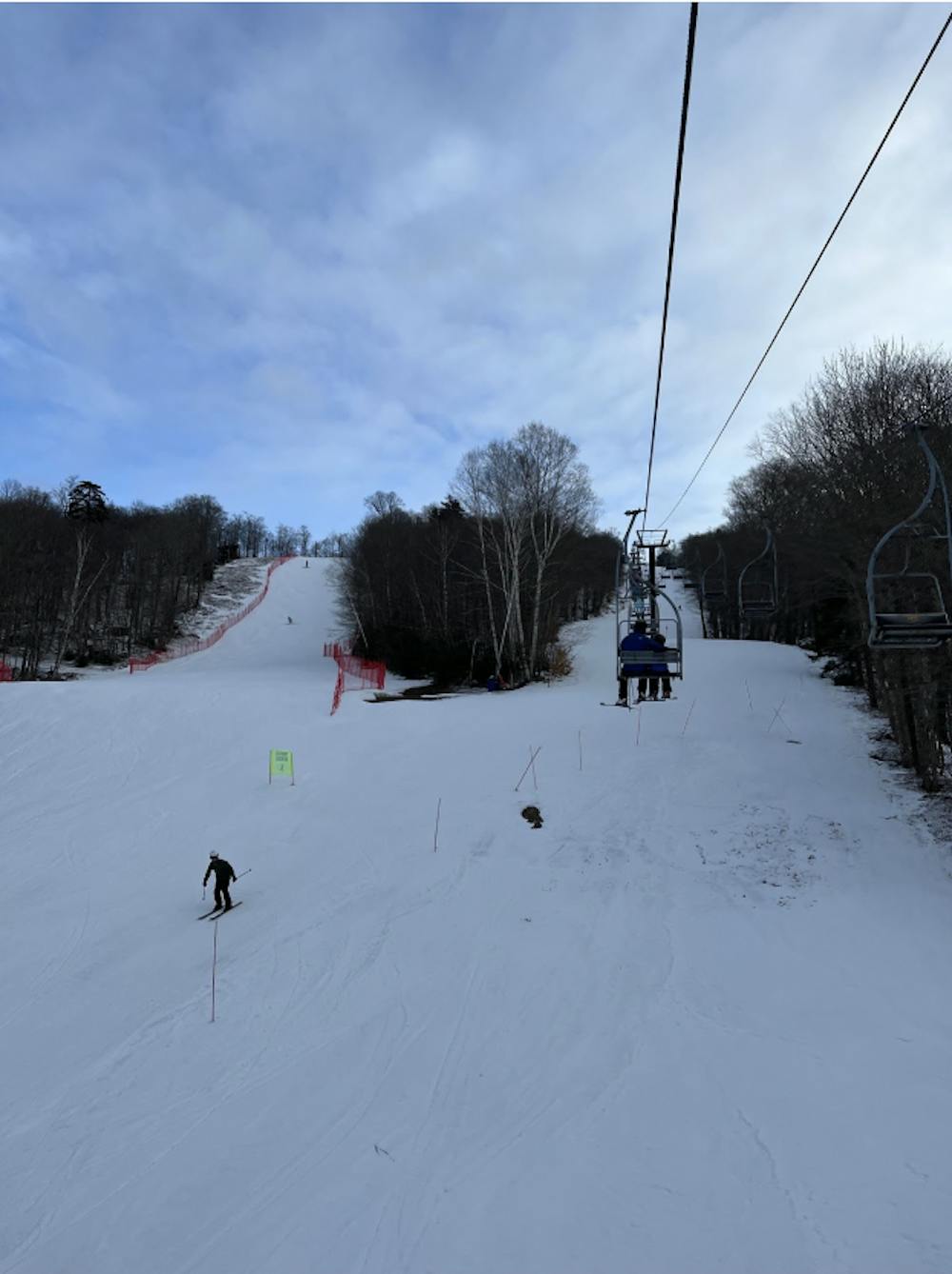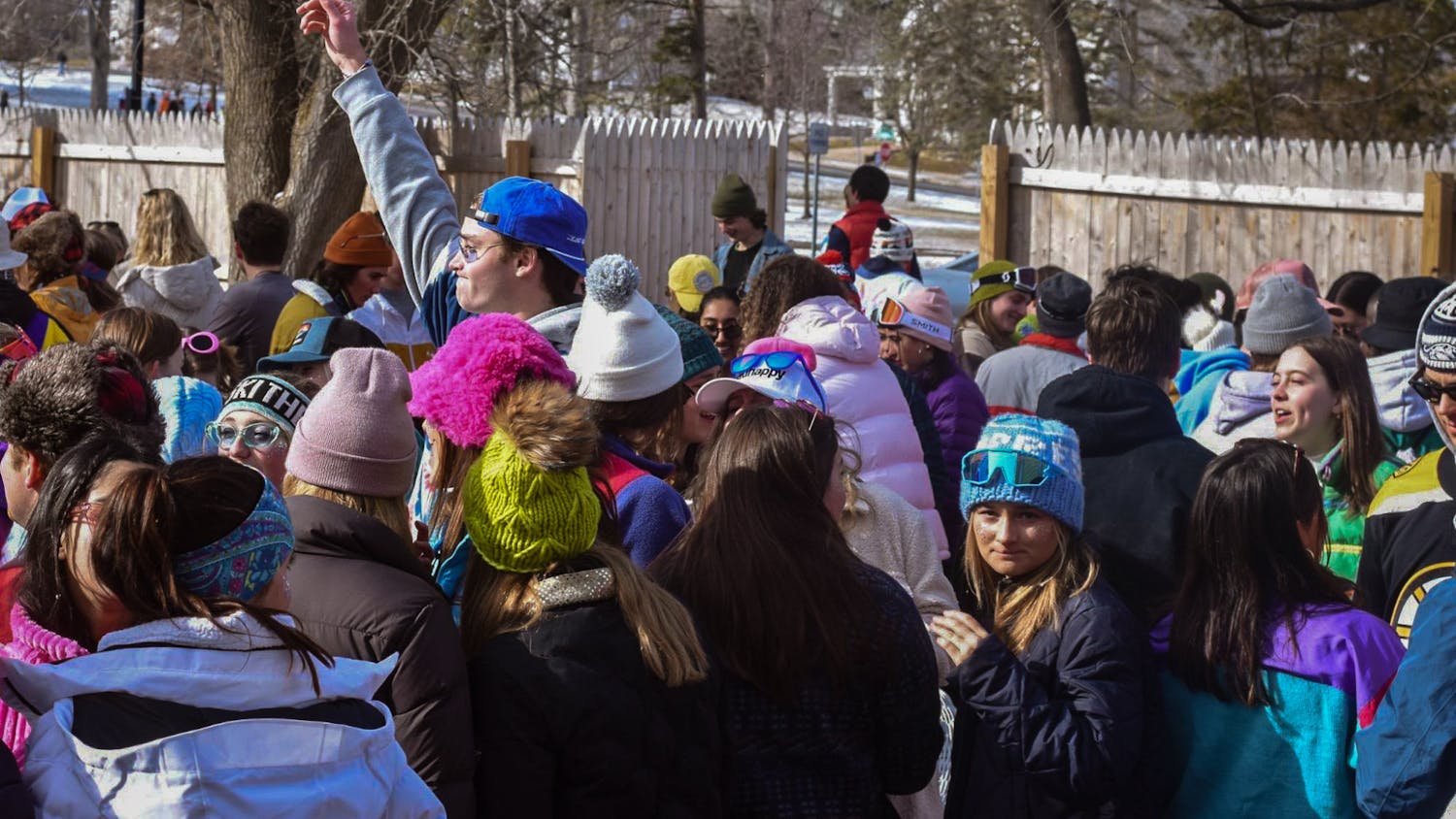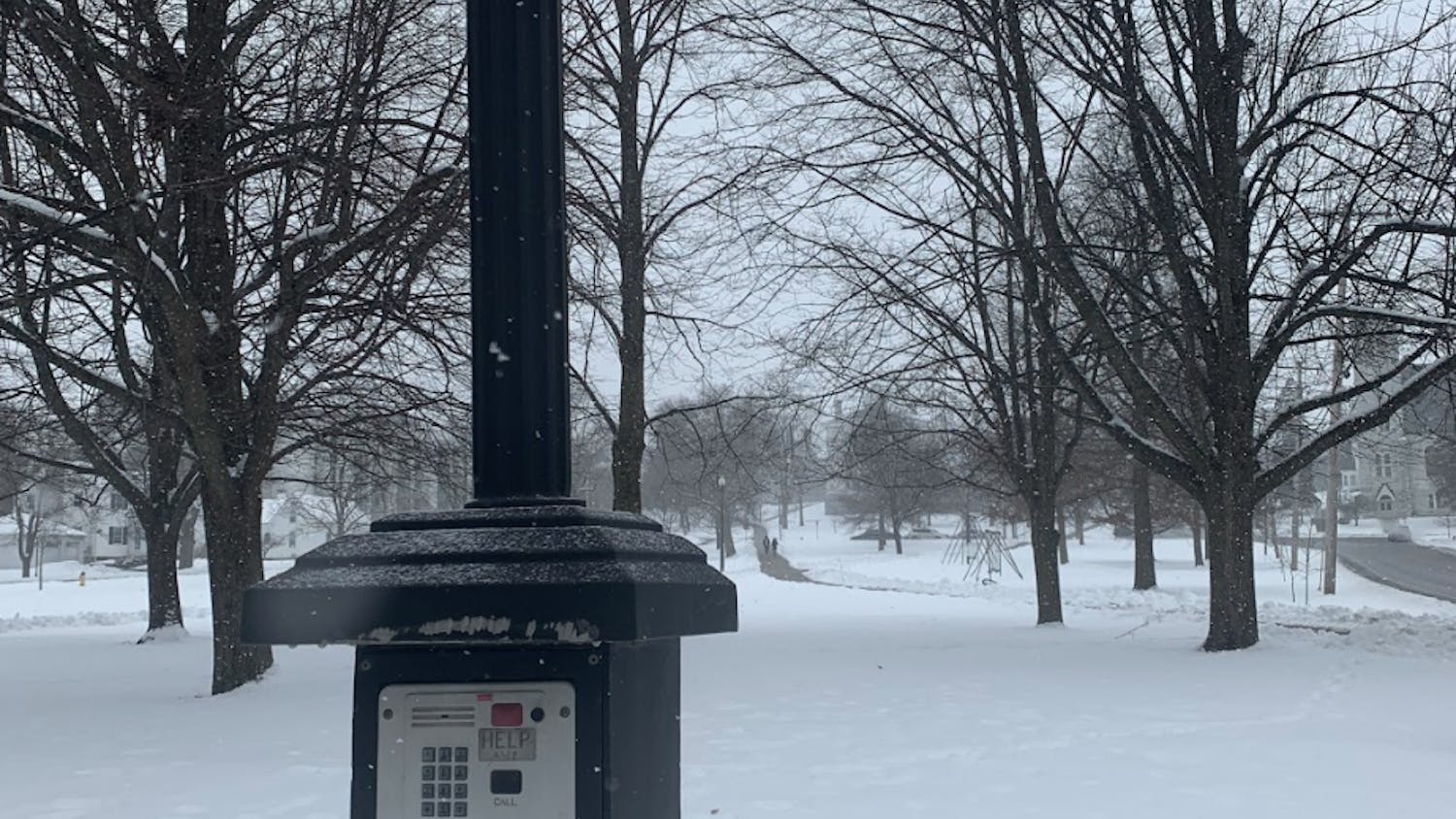Snow is a characteristic ingredient of Vermont winters, essential for avid skiers, snowboarders and other participants in outdoor winter sports.
Snowmaking technology has allowed both the Rikert Outdoor Center and the Middlebury College Snow Bowl to remain open and running and even host races regardless of the presence of natural snow. However, less snowfall than usual and warmer temperatures this season have placed greater pressure on snowmaking and have impacted the number of open trails at both ski centers.
According to Mike Hussey, director of the Snow Bowl, natural snowfall this season had amounted to about 42 inches as of mid-January. While higher temperatures have limited the ability to make snow, the Snowbowl has been able to meet its snowmaking targets and keep 100% of snowmaking trails open, though the remaining natural trails require snowfall in order to open.
The snowmaking trails, however, still offer enjoyment for skiers of all experience levels.
“We have had beginner-level, intermediate-level and expert-level terrain open since the first day of operations, so we have not been limited to the type of skier that has been visiting,” Hussey wrote in an email to The Campus.
August Newell ’23, who has been snowboarding at the Snow Bowl this winter, observed that many of the trails connecting routes were initially lacking in snow, but more routes have been opening up just in the last couple of weeks.
Even with snowmaking, there is still less snow overall. “You hit some rocks,” Newell said.
Snowmaking technology has also been responsible for keeping Rikert open this season. According to Robert Drake, director of Rikert Outdoor Center, the snowmaking system has benefited both college and high school nordic teams, as well as the local community, by consistently keeping about 2.5 kilometers (1.55 miles) of trails open, including the race course.
While there was snow at the start of the season on all of the trails, rain washed it away, and the snowmaking system has since played a greater role.
“We’re lucky that investment has been made, some number of years ago, to put some insurance on our race course, and then that has transferred to our community as well, being able to use that even when there’s not an event going on,” Drake told The Campus.
According to Drake, the ability to make snow is dependent on local environmental conditions. Temperature and humidity must be perfect in order to run the snowmaking system, he said, which means that the forecast must be monitored intensely throughout the season in order to take advantage of any chance to make snow.
This also requires increased flexibility on the part of Rikert’s staff.
“It all kind of has to come together for us to make the snow, and it’s tough on our staff, because we are constantly saying ‘we’re on, we’re not, we are, we’re not, we are’ and then there may be a window of opportunity to run [the snowmaking system],” Drake said.
While warmer temperatures have also required the Snow Bowl to be more flexible in its snowmaking schedule, staffing volume is dependent on the number of lifts operating and has remained consistent throughout the season.
Despite the capacity of both ski centers to keep trails open, the number of visitors to the centers has fluctuated and decreased along with the lack of natural snow. This is partly due to a common perception that skiing conditions will be poor when there is little snow in surrounding areas, Hussey said.
“Generally folks are not excited to ski when they look out their window and see brown ground. However, those that have come have found great skiing conditions and have been impressed,” Hussey wrote.
Despite snowmaking efforts, some skiers still find that the lack of natural snow alters the skiing experience. Kyle Hooker ’24 said that not much was open when he went alpine skiing at the Snow Bowl over MLK weekend and that the conditions have generally been “less fun” as a result of the lighter snowfall.
Hooker reflected on the snowfall this winter beyond the Bowl.
“Even apart from skiing, there are probably a dozen other reasons why I love snow, and just having at least a little bit of white on the ground, like on campus, is really nice, it really brightens it up,” Hooker said.
While low visitation has the potential to hurt both centers financially, Hussey reported that numbers are increasing with the arrival of natural snowfall. At Rikert, weekend and holiday visitation has remained normal, and season pass sales have been holding — a reflection of locals’ faith in reliable snowmaking, Drake said.
“Because of our snowmaking, people depend on us, and they know we’re here for them and we make it happen,” Drake added. “Again, for that snowmaking benefit, our guests that have bought passes for years and years in a row depend on us for that. They have faith that we’ll make that happen.”
In addition to ensuring that the Middlebury College nordic team can continue to train and race at home, thanks to its consistent snowmaking efforts, Rikert has also been able to host races from other areas that are unable to due to lack of natural snow or snowmaking However, Rikert too has been forced to move one event as well as cancel another for the first time in years due to warmer temperatures that prevented adequate snowmaking.
Since then, Rikert has hosted the 39th annual Bogburn Classic race on Jan. 7 and the St. Michael’s College Carnival on Jan. 20 and 21. Several more events are scheduled throughout February and March at Rikert, including the Eastern High School Championships on March 10–12.
The Snow Bowl has not needed to cancel or move any events this winter. Upcoming races can be found on their website.

Maya Heikkinen '24 (she/her) is a Copy Editor.
She has previously served as an Editor at Large, News editor, copy editor and staff writer. Maya is majoring in Conservation Biology with a minor in Spanish, but is also passionate about writing. She is from Orcas Island, WA, and loves being immersed in forests, running/hiking, gardening, and hanging with plants and cats. In addition to The Campus, she has been involved in SNEG and the currently extinct WildMidd.




